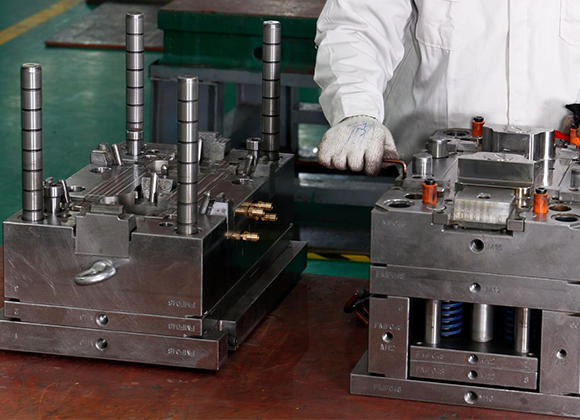Aluminum alloy 6061 can be used for various types of molding processes, including injection molding, blow molding, and thermoforming. It’s not the most common choice for molding due to its lower melt temperature compared to plastics, but it can be used in certain situations. Here’s how 6061 aluminum can be used for molding:
- Injection Molding: Injection molding is a widely used process for producing plastic parts. While 6061 aluminum is not typically used as the material for the molds themselves due to its lower melt temperature compared to plastics, it can be used for creating inserts or core sections within a mold. These inserts can help improve the mold’s durability and heat dissipation, especially when molding high-temperature plastics.
- Blow Molding: Blow molding is used to produce hollow plastic parts, such as bottles and containers. Similar to injection molding, 6061 aluminum can be used for inserts or components within blow molds. These inserts might help maintain the shape and structure of the molded parts.
- Thermoforming: Thermoforming involves heating a plastic sheet and shaping it around a mold to create a specific part. While aluminum is not directly used for the thermoforming process, it can be used for creating molds or tooling used in the thermoforming process. Aluminum molds can provide accurate and consistent shaping of the plastic sheet.

When using aluminum alloy 6061 for mold inserts or tooling, several factors should be considered:
- Thermal Conductivity: Aluminum’s high thermal conductivity can help dissipate heat from the molding process, which is important for maintaining the integrity of the mold and ensuring consistent part quality.
- Surface Finish: The surface finish of the mold or mold inserts is critical, as it can affect the final surface quality of the molded parts. Proper machining and finishing techniques are important to achieve the desired results.
- Wear Resistance: Depending on the specific molding process and the type of materials being molded, the mold may experience wear over time. Aluminum alloys are generally less wear-resistant than tool steels, so proper coating or surface treatments may be needed to enhance durability.
- Material Compatibility: Consider the compatibility of the aluminum alloy with the materials being molded. Some plastics and other materials may chemically react with aluminum, leading to issues such as corrosion or poor part quality.
- Design Considerations: The design of the mold or mold inserts should take into account factors such as part geometry, undercuts, draft angles, and demolding considerations to ensure smooth and efficient molding processes.
While aluminum alloy 6061 is not the primary choice for creating molds in most molding processes, its use as inserts or components within molds can provide benefits in specific situations, particularly when working with high-temperature plastics or when enhanced heat dissipation is required. If you’re considering using aluminum alloy 6061 for molding applications, collaborating with experienced mold designers and manufacturers is essential to ensure the success of your project.

